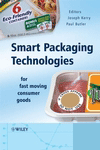We work in an exciting time of progress when it comes to inks and ink systems available on the market. Ever-increasing demands for performance and efficiency coupled with evolving environmental and workplace safety regulations have pushed the market to explore new options and have driven ink manufacturers to innovate and adapt. One such innovation is the growing support for UV ink systems, which offer a number of benefits over their solvent and aqueous counterparts.
First, UV inks offer almost immediate curing when passed under a UV lamp, with the actual cross-linking of the UV ink taking just 1 to 3 seconds. This allows printers to run at extremely high production rates, maximizing operating speeds and output. It also eliminates the need for space-consuming dryers required by high-speed solvent systems or racks for air-drying with aqueous inks. The rapid curing feature of UV inks also allows them to be compatible with the newest generation of graphic presses, which run multiple colors in progression with cure reactors in between each print head, allowing multiple colors to be laid in rapid succession without having to move the substrate through a dryer or onto a rack for drying.
Aside from efficiency, UV ink systems offer excellent quality and a wide variety of options. UV inks’ print quality is excellent and supports a vibrant color palette. These kinds of inks also offer outstanding chemical resistance properties as well as physical resistance, such as against rub and abrasion. As top coatings, UV coatings offer a diverse spectrum of possibilities, from matte to exceptionally glossy finishes, as well as velvety “soft-feel” and other textured finishes. The possibilities are nearly endless.
Another major advantage to UV ink systems – particularly compared with solvent ink systems – is the safety. Since they don’t contain any solvents, UV inks are a regulation-friendly alternative. In fact, the U.S. Environmental Protection Agency (EPA) has designated UV inks as the “Best Practicable Control Technology” available in the industry, and thus bases its wastewater regulatory requirements (or “Effluent Guidelines”) on its performance. UV inks contain 100 percent solids and 0 percent volatile organic compounds (VOC). This means printers using UV inks need not worry about controlling solvent emissions or the fire and other workplace safety hazards associated with storing and working with traditional solvent inks.
Many companies manufacture in the UV ink system marketplace, and many of these technologies were on display at last month’s Labelexpo Americas event, held from September 13-15 in Rosemont, Illinois.
Although change is sometimes difficult, it often opens up new and unexpected opportunities. In the case of UV flexo printing inks and coatings, emerging technologies offer the possibilities of increased productivity, improved print quality and a safer environment both inside the pressroom and out.
Magnum Inks & Coatings
(877) 460-8406
www.magnuminks.com
More on Inks
Visit www.flexpackmag.com for more on inks and color management.









